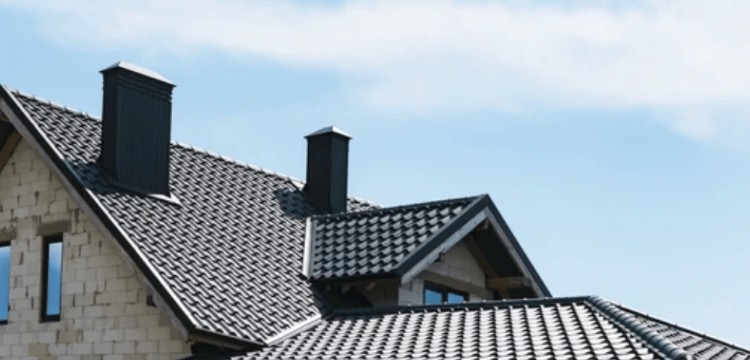
Why Roofing Trends Matter
Roofs used to be purely functional: protect the home, keep out the weather, and last long enough to justify the cost. Today, homeowners expect more. A roof should contribute to energy efficiency, support sustainable living, and even enhance curb appeal. As design preferences shift and technology advances, roofing is no longer just about covering a house—it’s about making a statement and investing in the future.
2025 is shaping up to be a transformative year for the roofing industry. From eco-friendly materials to bold design choices, new trends are redefining what it means to have a durable, stylish, and modern roof.
The Rise of Sustainable Materials
Sustainability isn’t just a buzzword anymore—it’s a demand. Homeowners are increasingly looking for roofing options that reduce environmental impact. Materials like recycled metal, reclaimed wood, and synthetic shingles made from polymers are gaining traction.
Why This Matters
- Energy savings: Sustainable materials often reflect heat, lowering cooling bills.
- Longevity: Many eco-friendly options outlast traditional shingles.
- Resale value: Buyers prioritize homes with green features.
Homeowners in New York, especially those investing in residential roofing, are embracing eco-conscious upgrades as both a lifestyle choice and a financial strategy.
Bold Colors and Customization
Neutral grays and browns are no longer the only roofing colors in style. 2025 is bringing in bolder palettes: deep blues, forest greens, and even terracotta shades. Advances in pigmentation technology mean roofs can hold vibrant colors longer without fading.
Customization is also trending. Homeowners can now mix tones or add patterned shingle designs that give roofs personality. A roof that matches trim, siding, or landscaping is no longer a luxury—it’s an accessible design choice.
Metal Roofing Goes Mainstream
Metal roofing isn’t new, but it’s finally moving beyond barns and industrial buildings. With modern finishes, standing seam designs, and improved installation methods, metal roofs are becoming a top pick for residential homes.
What’s Driving Popularity
- Lifespan of 50+ years
- High wind and storm resistance
- Reflective surfaces that reduce energy use
More homeowners are choosing metal for its blend of durability and sleek, contemporary look.
Solar-Ready Roofs
The demand for renewable energy is transforming roofing into an energy hub. Instead of bulky panels, solar shingles are emerging as the new solution. These shingles look like traditional roofing but generate electricity, blending aesthetics with performance.
Manufacturers are pushing innovations that make solar roofs easier to install and more affordable, and 2025 could be the year they move into the mainstream. Homes designed with solar-ready infrastructure will also enjoy higher resale value.
Smart Roofing Technology
Technology is making its way into every corner of the home, and roofs are no exception. Smart sensors can now be installed under shingles to monitor moisture levels, temperature changes, and structural shifts. These systems send alerts to homeowners before problems escalate, turning roof care into a proactive rather than reactive task.
While still new, smart roofing tech is expected to expand rapidly in the coming years, especially as homeowners demand better ways to protect major investments.
Cool Roofs for Urban Living
Heat islands—where urban areas trap more heat than surrounding rural areas—are a growing concern. Cool roofing materials, designed to reflect sunlight and absorb less heat, are becoming essential in cities.
White or reflective coatings on flat or low-slope roofs can lower indoor temperatures, reduce energy bills, and improve overall comfort. For metropolitan homeowners, cool roofs are less about aesthetics and more about necessity.
Blended Materials and Hybrid Systems
Hybrid roofing systems combine the strengths of multiple materials. For example, synthetic slate offers the classic look of natural stone without the weight or cost. Some systems now mix asphalt and polymers to increase durability while maintaining affordability.
This flexibility gives homeowners more control over performance, design, and budget. Expect hybrid options to continue growing as manufacturers refine their formulas.
Green Roofs and Living Spaces
Roofs that double as gardens or leisure spaces are on the rise. Green roofs, covered in vegetation, improve insulation, reduce stormwater runoff, and provide unique outdoor areas for urban homes. While more common in commercial projects, residential green roofs are making their way into forward-thinking designs.
Homeowners are also turning flat roofs into entertainment spaces with seating, lighting, and outdoor kitchens. Roofing in 2025 is as much about lifestyle as it is about protection.
Storm-Resistant Innovations
With storms becoming more severe, durability is a growing priority. Manufacturers are focusing on wind-rated shingles, impact-resistant materials, and reinforced installation techniques. These innovations help roofs withstand hurricanes, hailstorms, and extreme weather.
For homeowners in storm-prone regions, these advancements provide peace of mind and reduce insurance premiums.
Affordable Luxury
High-end roofing materials like slate and tile were once reserved for historic or luxury homes. Now, synthetic alternatives allow homeowners to capture the same look at a fraction of the cost. These materials are lighter, easier to install, and often require less maintenance.
This shift toward affordable luxury ensures more homeowners can personalize their roofs without overspending.
Why Trends Are Worth Watching
Following roofing trends isn’t about chasing fads—it’s about making informed decisions that align with lifestyle, budget, and long-term goals. A trend like solar-ready roofing isn’t just stylish; it’s an investment in energy independence. Bold colors may be aesthetic, but they also differentiate homes in competitive real estate markets.
Roofing is no longer a behind-the-scenes feature of a home. It’s a visible, functional, and financial statement.
Planning Your Next Roof with Confidence
Homeowners looking to replace or upgrade in 2025 should take the time to explore these emerging trends. By blending design with durability and technology with tradition, modern roofs deliver more than protection. They enhance value, reduce costs, and create opportunities for sustainability.